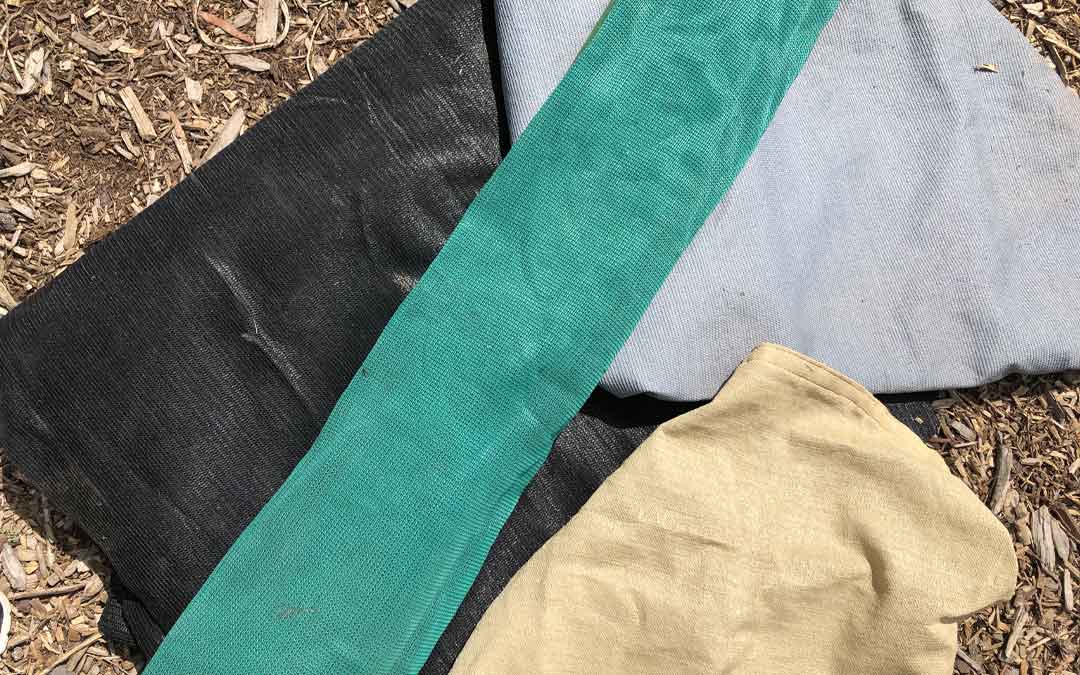Shade cloth- need, purpose and options

Shade cloth structures, whether temporary or permanent, are likely to be ever more necessary for home gardeners as we experience more heat waves and higher temperatures. Even a single day of scorching heat can do irreversible damage to our edible gardens.
Heat waves can cause stress to plants by drying out the soil around their roots resulting in the dropping of flowers and fruit. This is caused by direct sunlight to the root area and shade cloth helps prevent this. It lowers the heat around the plant by blocking out radiant heat, i.e. ultraviolet (UV) light. UV, meaning ‘beyond violet’, is light that is invisible to the eye and, while not a lot of it gets through the ozone layer, with this layer thinning, there is scientific concern about its effects on plant growth.
Even plants that thrive in warm conditions can suffer sunburn. This includes tomatoes, eggplants, capsicums, cucumbers and zucchini. Stone fruit can stew from the inside when their stone heats up so a peach or apricot that may look normal when picked may go to mush in your hand if its stone has heated up on days of extreme heat.
Temporary shade cloth structures can be erected by hammering four star pickets into each corner of a garden bed, draping them with shade cloth (or even an old sheet), and securing the cloth with yellow star picket caps. In this case, what you use is not especially important.
However, if you are erecting a permanent structure, choosing the right type of shade cloth for your circumstances is important. There are four criteria to consider:
- knitted or woven
- density
- colour
- aesthetics.
Knitted or woven?
Knitted shade cloth, which is made of light weight polyethylene, is more stretchy and flexible than woven shade cloth and this makes it easier to install. And it is durable and has a longer life expectancy. It is used for greenhouses and shade houses. It is UV resistant.
Woven shade cloth is also made from polypropylene but is heavier and can be used as a wind screen, privacy screen, patio shading, and solar protection for plants. It is UV stabilised which means that it can tolerate extreme sun exposure. It can fray and when cut, unlike knitted, will unravel making it unsuitable to customise yourself.
Density
Density (also known as ‘percentage’) refers to the amount of sun that does not penetrate the cloth. 30-60% density means that 30-60% sunlight is blocked out. Vegetables and fruit generally need 30-60% shade cloth. Most vegetables do well under 30% shade cloth, especially tomatoes, eggplants, and capsicums and other heat tolerant vegetables. Darker leaf vegetables, such as chard and spinach and sensitive vegetables like lettuce do well under 60% shade cloth. Flowers are often grown under 60% as well. Density of 75-90% is best for orchids, palms, ferns, and shade loving plants that require little sunlight.
Colour
The five common colours are black, white, green, blue, and red though there are many more. They have different qualities and effects on plant growth. Each colour filters out a different part of the light spectrum. This can have a beneficial or adverse affect depending on what the plant requires.
Black and green shade cloths absorb heat and protect from harmful UV rays, and filter light.
White shade cloth reflects heat and diffuses UV rays. It reduces the amount of light getting through while not filtering the light spectrum. It also lowers greenhouse temperatures while black increases them.
Blue shade cloth is often used by cucumber farmers. Red (or black) is apparently best for growing lettuces.
Aesthetics
This has no bearing on the cloth’s effect on plants but it is important to some people. Black shade cloth tends to disappear into the landscape while white and green stand out. Some people prefer black for this reason.
Written by Robin Gale-Baker
First published in the Local Food Connect newsletter
